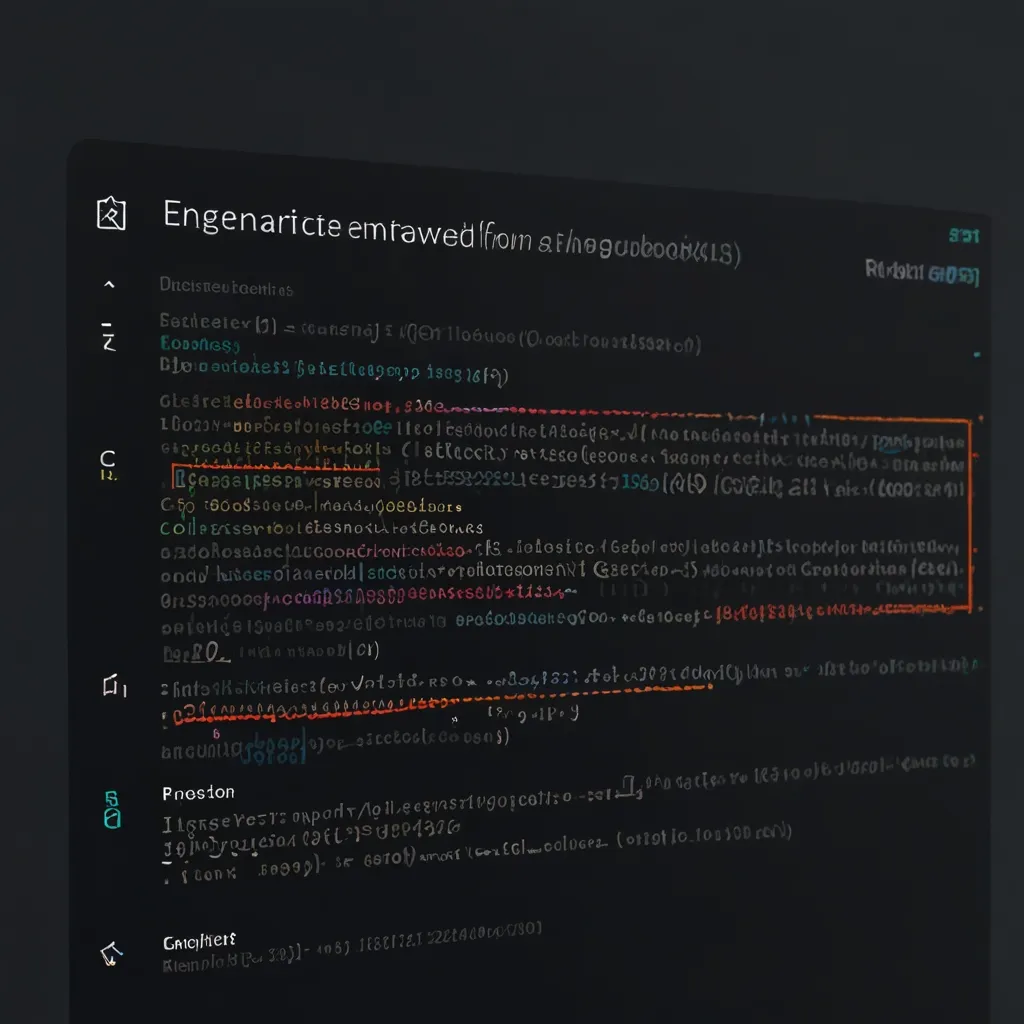Angular has come a long way since its inception, and with each release, it’s become more powerful and efficient. But as our apps grow in complexity, we need to stay on top of performance optimization. Let’s dive into the ultimate checklist to supercharge your Angular app’s performance!
First things first, let’s talk about Change Detection. It’s the heart of Angular’s reactivity system, but it can also be a major performance bottleneck if not handled properly. By default, Angular checks the entire component tree for changes, which can be overkill for large applications. To tackle this, we can use OnPush change detection strategy. It’s like putting your components on a diet – they only update when they absolutely need to.
Here’s how you can implement OnPush:
import { Component, ChangeDetectionStrategy } from '@angular/core';
@Component({
selector: 'app-my-component',
template: '...',
changeDetection: ChangeDetectionStrategy.OnPush
})
export class MyComponent { }
Trust me, your app will thank you for this!
Next up, let’s chat about lazy loading. It’s like ordering food – why get everything at once when you can order as you go? Lazy loading modules can significantly reduce your initial bundle size, making your app load faster. Here’s a quick example of how to set up a lazy-loaded route:
const routes: Routes = [
{ path: 'lazy', loadChildren: () => import('./lazy/lazy.module').then(m => m.LazyModule) }
];
I remember when I first implemented lazy loading in a large project – the initial load time dropped by almost 40%! It was like magic.
Now, let’s talk about something that often gets overlooked – unsubscribing from observables. Failing to unsubscribe can lead to memory leaks faster than you can say “Angular”. Always make sure to clean up your subscriptions, especially in components that can be destroyed. Here’s a neat trick I use:
import { Component, OnDestroy } from '@angular/core';
import { Subject } from 'rxjs';
import { takeUntil } from 'rxjs/operators';
@Component({...})
export class MyComponent implements OnDestroy {
private unsubscribe$ = new Subject<void>();
ngOnInit() {
someObservable$.pipe(
takeUntil(this.unsubscribe$)
).subscribe();
}
ngOnDestroy() {
this.unsubscribe$.next();
this.unsubscribe$.complete();
}
}
This pattern has saved me countless hours of debugging mysterious performance issues.
Speaking of observables, let’s not forget about the async pipe. It’s like having a personal assistant for your subscriptions. Not only does it handle subscribing and unsubscribing for you, but it also plays nicely with change detection. Here’s how you can use it in your templates:
<div *ngIf="data$ | async as data">
{{ data }}
</div>
Trust me, once you start using the async pipe, you’ll wonder how you ever lived without it.
Now, let’s shift gears and talk about something that might seem obvious but is often overlooked – minification and compression. Make sure your production builds are minified and that your server is set up to serve gzipped files. It’s like vacuum-packing your code for efficient delivery.
While we’re on the topic of builds, don’t forget about tree shaking. It’s Angular’s way of playing Marie Kondo with your code, keeping only what brings joy (or in this case, what’s actually used). To ensure effective tree shaking, avoid side effects in your code and use ES6 module syntax.
Let’s dive a bit deeper into the world of rendering. Angular offers two powerful tools: Ahead-of-Time (AOT) compilation and Server-Side Rendering (SSR). AOT compilation is like prepping your meals for the week – it does the hard work upfront so your app can start faster. SSR, on the other hand, is great for improving initial load time and SEO. It’s like having your cake and eating it too!
Now, here’s something that’s often overlooked – virtual scrolling. If you’re dealing with long lists, virtual scrolling can be a game-changer. It’s like having a magical window that only shows what’s necessary. Angular provides the @angular/cdk/scrolling module to make this easy:
import { ScrollingModule } from '@angular/cdk/scrolling';
@NgModule({
imports: [ScrollingModule]
})
export class MyModule { }
Then in your template:
<cdk-virtual-scroll-viewport itemSize="50" class="example-viewport">
<div *cdkVirtualFor="let item of items" class="example-item">{{item}}</div>
</cdk-virtual-scroll-viewport>
I once implemented this on a client project with a list of thousands of items, and the performance improvement was night and day.
Let’s talk about something that’s close to my heart – Angular’s built-in performance profiler. It’s like having x-ray vision for your app’s performance. You can enable it by importing the enableDebugTools function:
import { enableDebugTools } from '@angular/platform-browser';
platformBrowserDynamic().bootstrapModule(AppModule)
.then(moduleRef => {
const applicationRef = moduleRef.injector.get(ApplicationRef);
const componentRef = applicationRef.components[0];
enableDebugTools(componentRef);
})
.catch(err => console.error(err));
Once enabled, you can profile your app using ng.profiler.timeChangeDetection() in the console. It’s like having a personal trainer for your Angular app!
Now, let’s touch on a topic that’s often overlooked – pure pipes. They’re like the unsung heroes of Angular performance. Pure pipes are only re-evaluated when their input changes, which can significantly reduce the number of computations in your templates. Here’s a quick example:
import { Pipe, PipeTransform } from '@angular/core';
@Pipe({
name: 'myPipe',
pure: true // This is the default, but it's good to be explicit
})
export class MyPipe implements PipeTransform {
transform(value: any): any {
// Your transformation logic here
}
}
I’ve seen cases where replacing a method call in a template with a pure pipe reduced change detection cycles by over 50%!
Let’s not forget about trackBy function when using ngFor. It’s like giving Angular a cheat sheet for rendering lists. Instead of re-rendering the entire list when it changes, Angular can keep track of which items have actually changed. Here’s how you can use it:
@Component({
template: `
<li *ngFor="let item of items; trackBy: trackByFn">{{item.name}}</li>
`
})
export class MyComponent {
trackByFn(index, item) {
return item.id; // unique id corresponding to the item
}
}
This can be a huge performance boost when dealing with large lists that update frequently.
Now, here’s a pro tip – use OnPush change detection strategy in combination with Immutable.js or other immutability libraries. It’s like giving your app a turbo boost. When you use immutable data structures, Angular can perform simple reference checks to determine if data has changed, rather than deep object comparisons.
Let’s talk about something that’s often overlooked – route resolvers. They’re like the bouncer at a club, making sure everything’s ready before letting users in. By using resolvers, you can ensure that necessary data is loaded before a component is initialized, preventing layout thrashing and improving perceived performance.
Here’s a quick example of a resolver:
import { Injectable } from '@angular/core';
import { Resolve } from '@angular/router';
@Injectable({
providedIn: 'root'
})
export class MyResolver implements Resolve<any> {
resolve() {
return this.myService.getData();
}
}
Then in your route configuration:
{
path: 'my-route',
component: MyComponent,
resolve: {
data: MyResolver
}
}
I’ve used this technique in several projects, and it always results in a smoother user experience.
Lastly, let’s not forget about good old-fashioned code splitting. It’s like packing for a trip – you don’t need to bring everything with you all at once. By splitting your code into smaller chunks, you can significantly reduce the initial load time of your app. Angular’s CLI makes this easy with the --bundle-budget flag when building your app.
Remember, performance optimization is an ongoing process. It’s not about implementing all these techniques at once, but rather about understanding your app’s specific needs and applying the right optimizations at the right time. Keep profiling, keep measuring, and most importantly, keep your users happy with a blazing-fast Angular app!
And there you have it – the ultimate Angular performance checklist. From change detection strategies to virtual scrolling, from lazy loading to pure pipes, we’ve covered a lot of ground. But remember, the journey to a performant Angular app is ongoing. Keep exploring, keep learning, and most importantly, keep optimizing!






